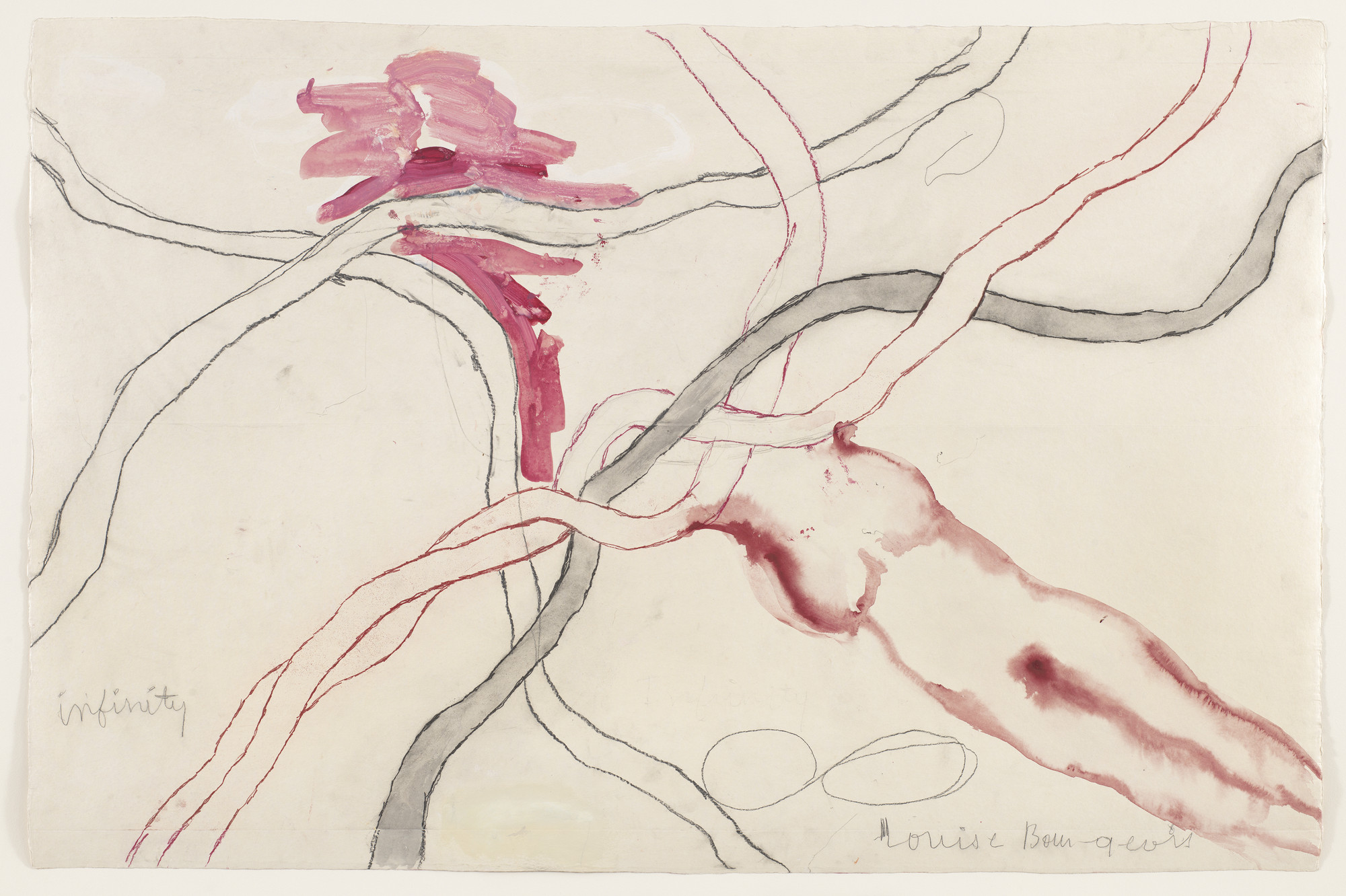 |
| Louise Bourgeois. No. 5 of 14 from the installation set À l’Infini. 2008. Soft ground etching, with selective wiping, watercolor, gouache, pencil, colored pencil, and watercolor wash additions, 40 x 60" (101.6 x 152.4 cm). The Museum of Modern Art, New York. Purchased with funds provided by Agnes Gund, Marie-Josée and Henry R. Kravis, Marlene Hess and James D. Zirin, Maja Oeri and Hans Bodenmann, and Katherine Farley and Jerry Speyer, and Richard S. Zeisler Bequest (by exchange). © 2017 See at MOMA.org |
2017: A tough year for me and I am glad it is done. These last six months, I've been trying to get over the last 15% of Bell's Palsy (i.e., movement in my left upper and lower lip). In July, I woke up with my symptoms of facial paralysis. I thought it was a stroke.
Needless to say, I wasn't mentally up to writing, gardening, knitting or reading. It was through the support of family, friends, co-workers, women's writing circle and SOF Circle who encouraged me to start off writing a word for the day. Over the course of three months, I was able to write a paragraph.
Bell's Palsy has caused me to do a lot of reflection. Specifically, I realize that I need a year long challenge to keep me going on writing a blog. To be honest my blog looks like a winter activity.
Henry Cowell: Tiger (1928) for piano played by Heidi Brende Leathwood. 2012
T.A.'s Year Challenge
T.A., a SOF member put out a challenge to our circle. It is a academic, meditative and creative (e.g., craft, arts, creative writing/journaling, gardening, composing, cooking, knitting, sewing (how you express yourself)) challenge.
Directions:
1) Pick a God or Goddess to work with in 2018. It can be someone you don't know or someone you would like to get to know better.
2) Begin to research and study them. Find out the symbols, stories, written religious text, colors, animals, emotions, plant life associated with them.
3) From this list choose twelve aspects (identified in #2).
4) Each month meditate on one aspect; and explore this aspect creatively (e.g., craft, arts, creative writing/journaling, poetry, gardening, composing, cooking, knitting, sewing, cartoon (how you express yourself)).
Major rules: We all are creative. Standing ovations are for everyone who is able to get something down or make something by hand.
 |
| Aitch, Old Souls |
Example:
I will be exploring the "Tiger" in January. Types of creative projects I could do are the following:
- Write an essay on what Blakes' The Tyger poem means to me or the purpose of the Tiger in Melissa Ginsburg's poem or A.A.Milne's Tigger or Martel's Life of Pi Tiger or the Tiger's Wife by Tea Obreht and the deaf woman who befriends a tiger.
- Write a haiku about the symbolism of tigers (i.e., power, courage or fear) (Haiku is a Japanese verse in three lines. Line one has 5 syllables, line 2 has 7 syllables and line three has 5 syllables.)
- Consider plants with "tiger" in their name. Find out if they could grow in my garden.
- Learn to play Henry Cowell's Tiger on the piano that's collecting dust.
- Bake and share some Tiger Chocolate Cookies
- Cook-up Crying Tiger Beef.
- Paint with orange and black
- Sew a tiger.
- Watch reruns of the Detroit Tiger's play against my home baseball team.
All of these are creative possibilities in this challenge.









